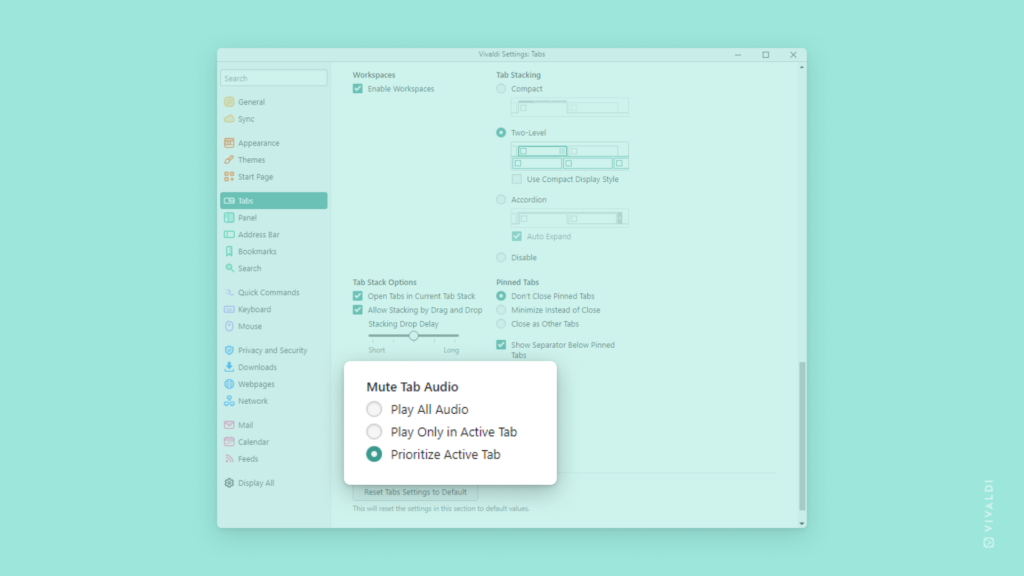Desktop Tips
Tip #415
January 29, 2024
Skip confirming window and browser closing dialogs.
When you’re confident in your actions and don’t feel like you need to be asked whether you’re sure about closing a single window or the browser altogether, you can easily disable the prompts.
To disable the confirmation dialogs:
- Go to Settings > General > Close and Exit.
- Disable either “Show Exit Confirmation Dialog”, “Show Close Window Confirmation Dialog” or both.
Alternatively, tick the box for “Do not show confirmation again” when prompted with the dialog.
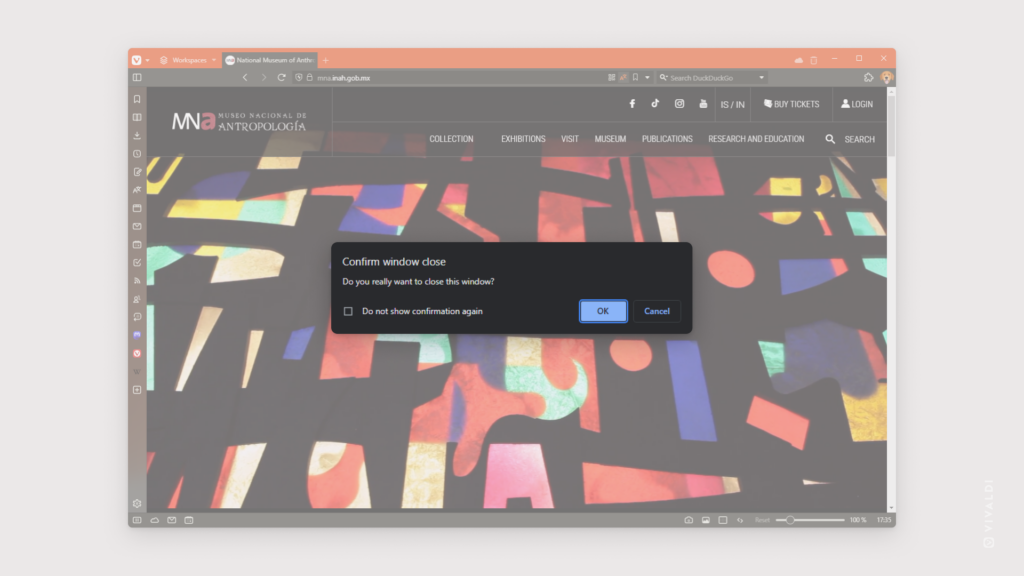
Tip #414
January 26, 2024
Send links and selected text from web pages to others effortlessly with Vivaldi Mail.
One of the perks of having a mail client in the browser is that you can quickly share interesting content you’ve found online via email.
To send a link or a snippet of text you’ve found on a web page:
- Make sure you have Vivaldi Mail enabled and you’ve added your email account to it.
If not, go to Settings > Mail to set things up. - On a web page, right-click on the link or selected text you want to share.
To send the link of the current web page you’re on, right-click on an empty area of the page. - Select “Send (Link) by Mail”.
- In the email editor tab that opens, fill out the relevant fields, and add more context to the email.
- Click
 “Send”.
“Send”.
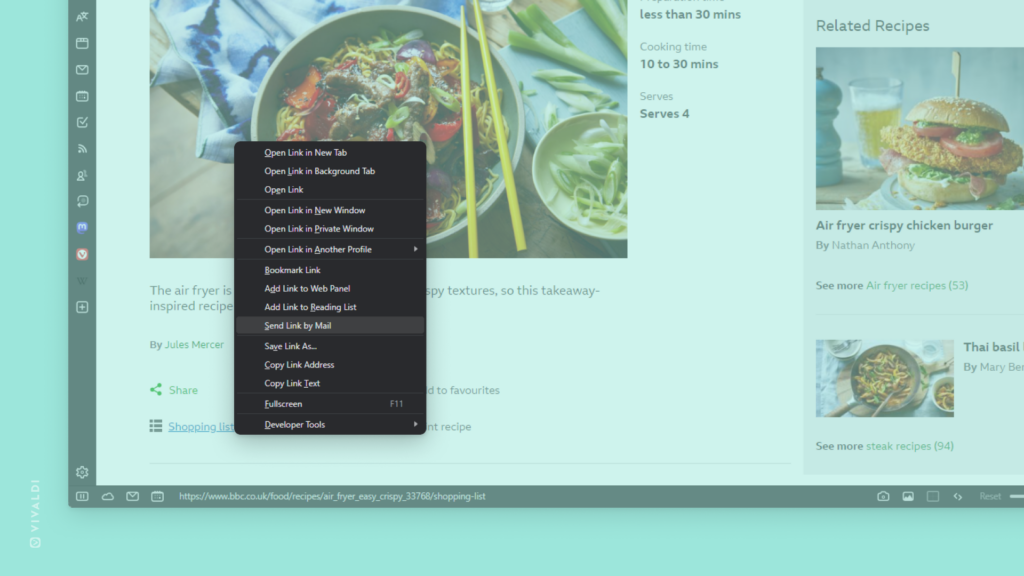
Tip #412
January 24, 2024
Selectively open Tabs from Saved Sessions.
Saving all your tabs as a session is a great way to return to what you were doing at a later date. But what if you need just one or a few of the tabs in the session and don’t want to restore all of them? Check out the instructions below.
To selectively open Tabs from a Saved Session:
- Open the Sessions Panel.
- Select the session that has the tab(s) you want to open.
- Click on “Edit Session” in the top right corner of the panel or right-click on the session and select “Edit / View Contents”.
- Select the tab(s) you want to open and right-click on it/them.
- Select “Open” or “Open Link”, followed by the opening location (e.g. New Background Tab), to open just the chosen one(s).
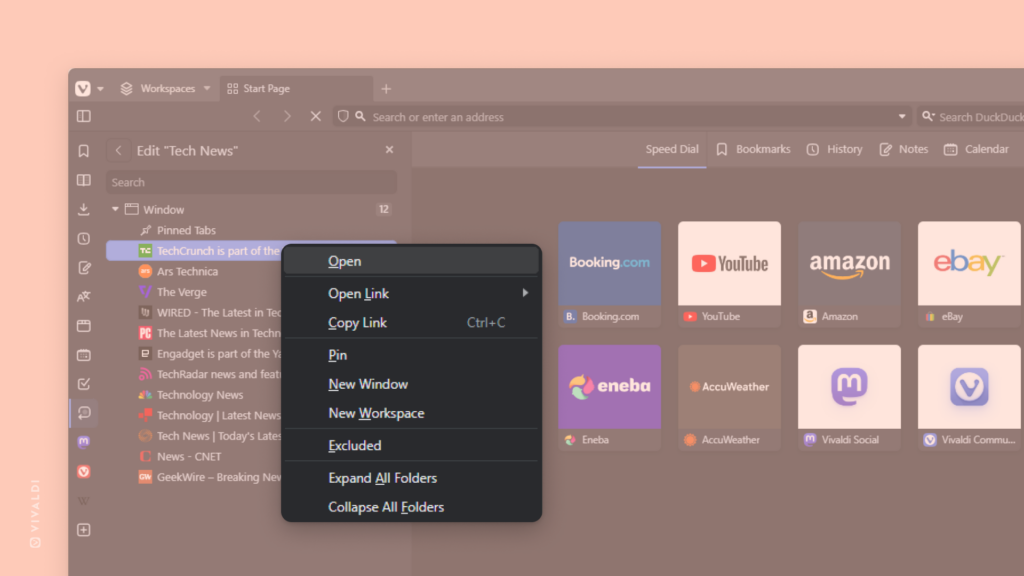
Tip #406
January 16, 2024
Divide events and tasks in your Vivaldi Calendar by category into separate calendars.
A calendar is vital for keeping up with a busy schedule. To make it easier to view and manage your events and tasks, you can create multiple calendars for various types of obligations in your Vivaldi Calendar. You can also assign a different color for each calendar to make the events stand out more.
To create a new calendar:
- Go to Settings > Calendar > Calendars.
- Click on + Add Calendar below the list of existing calendars.
- Select which account the calendar should belong to, give the calendar a name, choose a color and look over
- Click “Save” to create the new calendar.
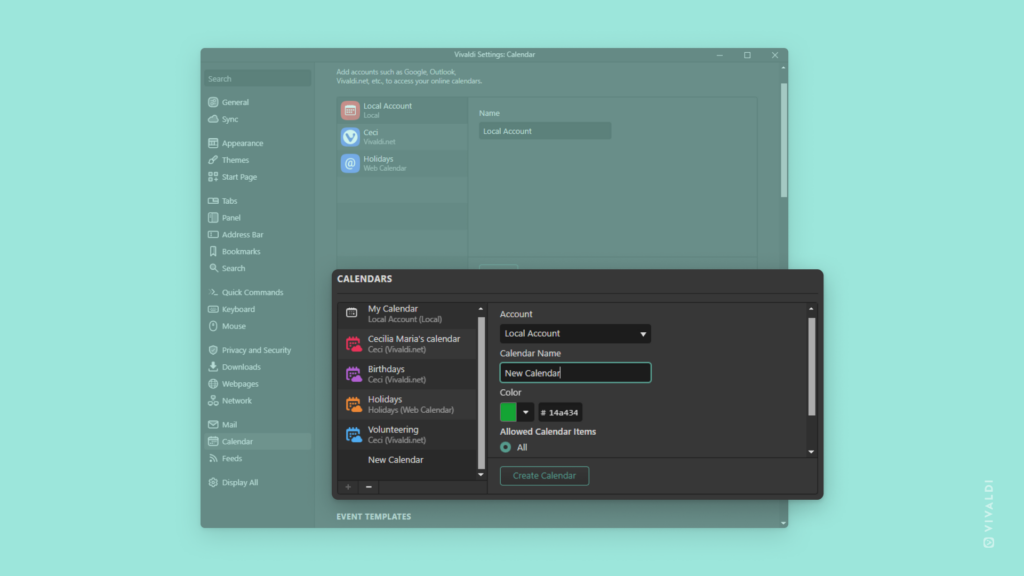
Tip #404
January 12, 2024
Make your Notes more readable with Markdown formatting.
Markdown is a simple markup language used to create rich text (e.g. HTML) with a plain text editor. It lets you add basic formatting to your text, using symbols known and accessible on all keyboards.
To use Markdown in Vivaldi Notes:
- Open the Notes Panel or Notes Manager and select or create a note.
- Make sure the Editor/Text view is enabled.
- Use the basic Markdown syntax to add headings, lists, bold text, etc.
- Switch to Markdown/Visual view to see the outcome.
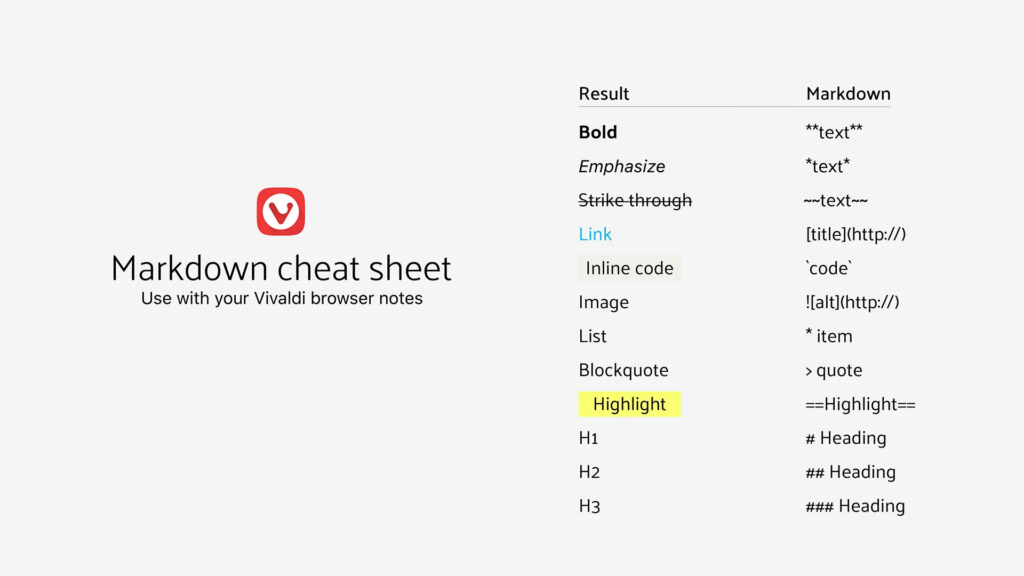
Tip #403
January 11, 2024
Jump back in time by enabling Automatic Session Backups.
With Saved Sessions you can look up a single tab or restore your complete browsing session from a specific time in the past. You can save Sessions manually or have them be saved automatically once every hour.
To automatically back up all your open tabs as a Saved Session:
- Open the Sessions Panel.
- At the bottom of the panel, click on “Automatic Session Backup”.
- Select how many days worth of backups you want to keep:
- Last day,
- Last 3 days,
- Last 5 days,
- Last 30 days.
- Click “Save”.
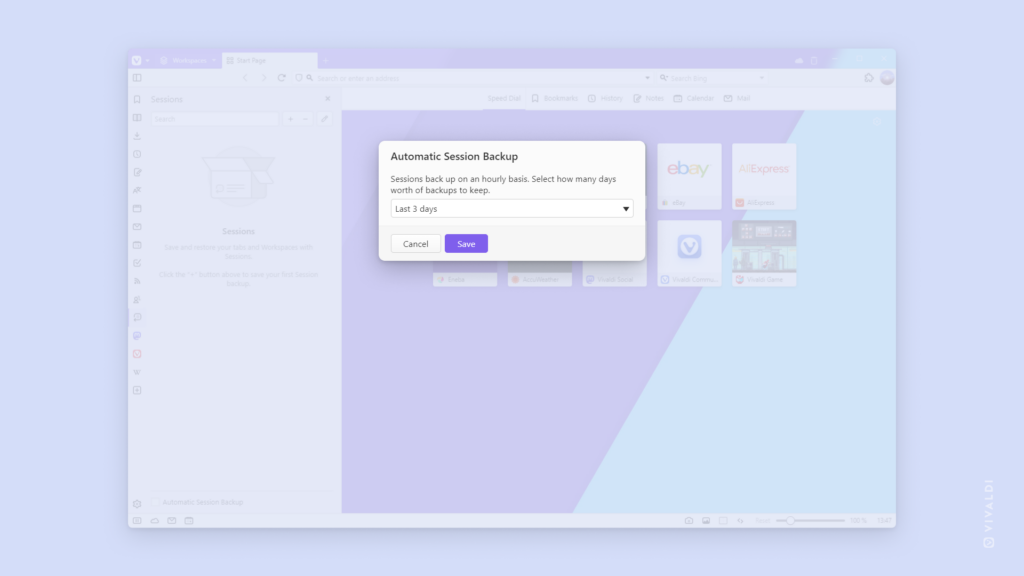
Tip #400
January 8, 2024
Move tabs automatically to the correct Workspace with Workspaces Rules.
Workspaces are a way to organize your tabs where you can keep different tabs in different Workspaces, based on a topic or category. You might, for example, have a workspace for work, another for sports, and a third for travel.
To set up Workspace Rules:
- Go to Settings > Tabs > Workspaces.
- Click on Add New Workspace Rule.
- Set up the rule criteria.
- Select which workspace the tab should be moved to.
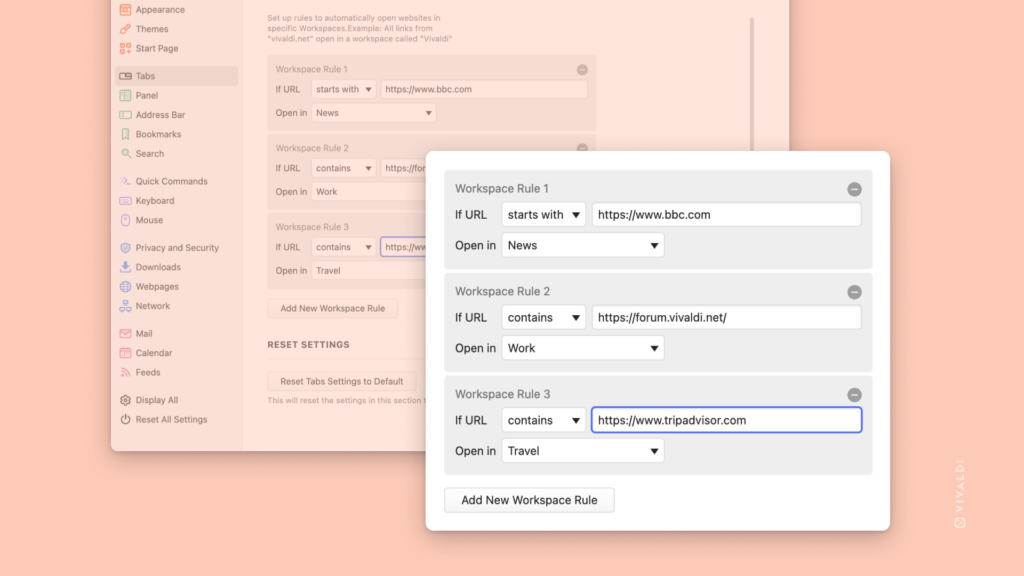
Tip #398
November 30, 2023
Open Tabs from the Window Panel with a single click instead of a double click.
By default, to switch tabs using the Window Panel, you need to double click on an entry to activate it. If you’d like to switch tabs with only one click, like on the Tab Bar, you’ll need to enable a setting for it.
To enable single click tab switching in the Window Panel:
- Go to Settings > Panels > Window Panel.
- Enable “Activate with Single Click.
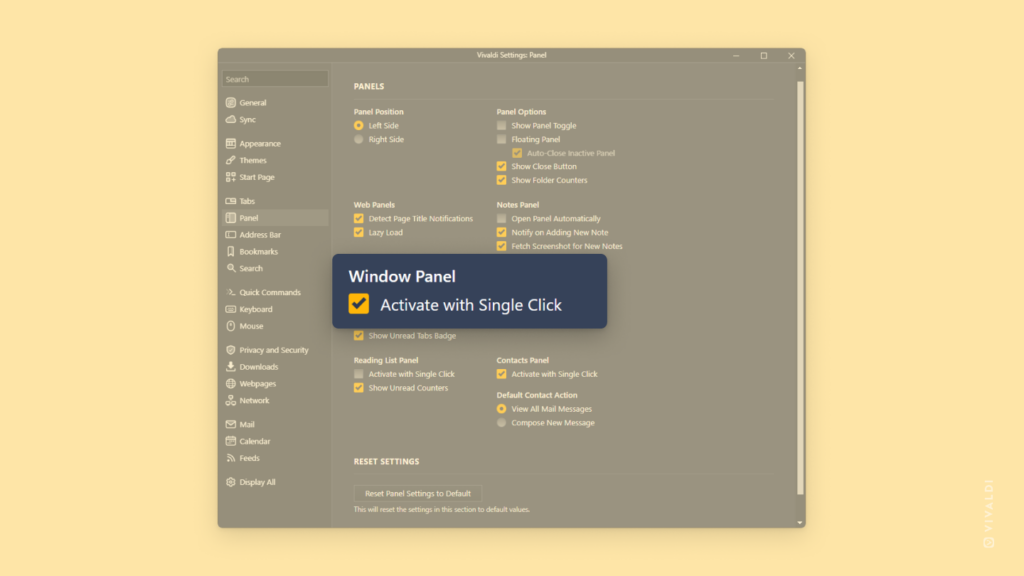
Tip #397
November 29, 2023
Pause incoming messages in Vivaldi Mail by taking the account offline.
If you temporarily want to stop receiving messages for a mail account, but don’t want to remove the account from Vivaldi Mail altogether, you can enable offline mode.
To take a mail account offline:
- Go to Settings > Mail > Mail accounts.
- Select the account.
- In Identity settings, enable “Take Account Offline”.
You’ll still be able to send messages from the account, but won’t receive any new incoming messages until you turn off the setting.
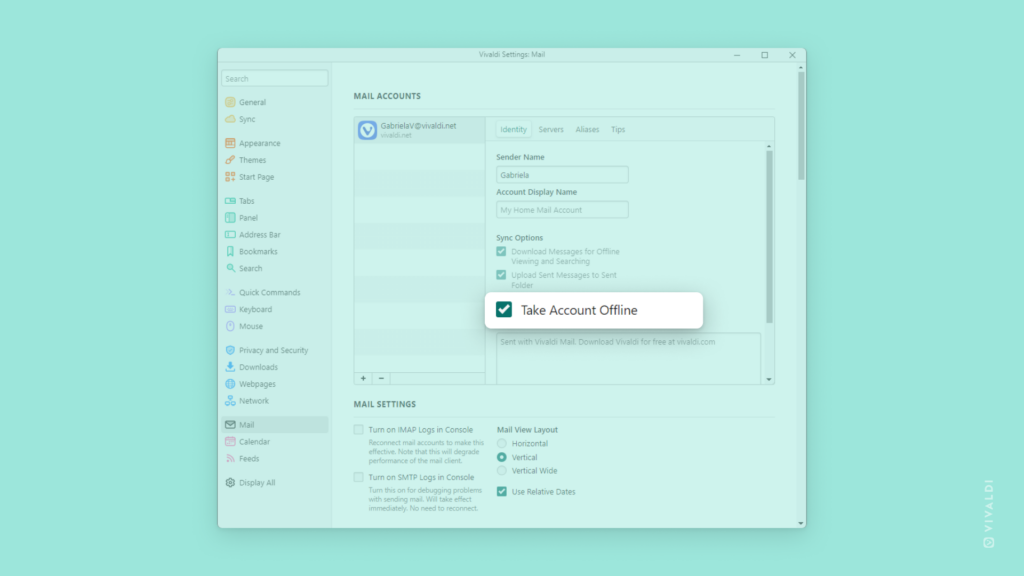
Tip #395
November 27, 2023
If Vivaldi isn’t working as it should follow our troubleshooting guides to find a solution.
When Vivaldi starts behaving in expected and unwanted ways it’s time to troubleshoot and solve the issue. The solution might be as easy as restarting the browser, or maybe a third-party extension you’ve added is causing trouble.
To troubleshoot issues in Vivaldi check out the following Help pages:
- Troubleshoot issues on desktop
- Troubleshoot issues on Android
- Troubleshoot issues on iOS
- Troubleshoot issues in Vivaldi Mail
- Troubleshoot issues in Vivaldi Calendar
- Troubleshoot issues with Sync
If the suggestions in these Help pages don’t get rid of the issue, you can ask for further assistance on our Forum and if you can consistently reproduce the issue, report it to us as a bug on https://vivaldi.com/bugreport/.
Tip #392
November 22, 2023
Create a feeling of using a website in an app by hiding the browser’s user interface.
In Vivaldi, you can install web pages as Progressive Web Apps, aka PWAs, or open them in separate User Profiles, to give a feeling that you’re using them separately in a dedicated app. These are more permanent options, but there’s another solution for a quick temporary option.
To get an app-like feeling of a website:
- Open the web page in a new browser window.
- For that window, toggle the UI off to hide the toolbars in one of the following ways:
- Go to the Vivaldi menu > Window > Hide UI;
- Type “Toggle UI” in Quick Commands;
- Use the Keyboard Shortcut Ctrl+F11;
- Create a Mouse Gesture for the action.
Since the user interface is toggled off only in the current window, you’ll still see all your other windows with the usual toolbars.
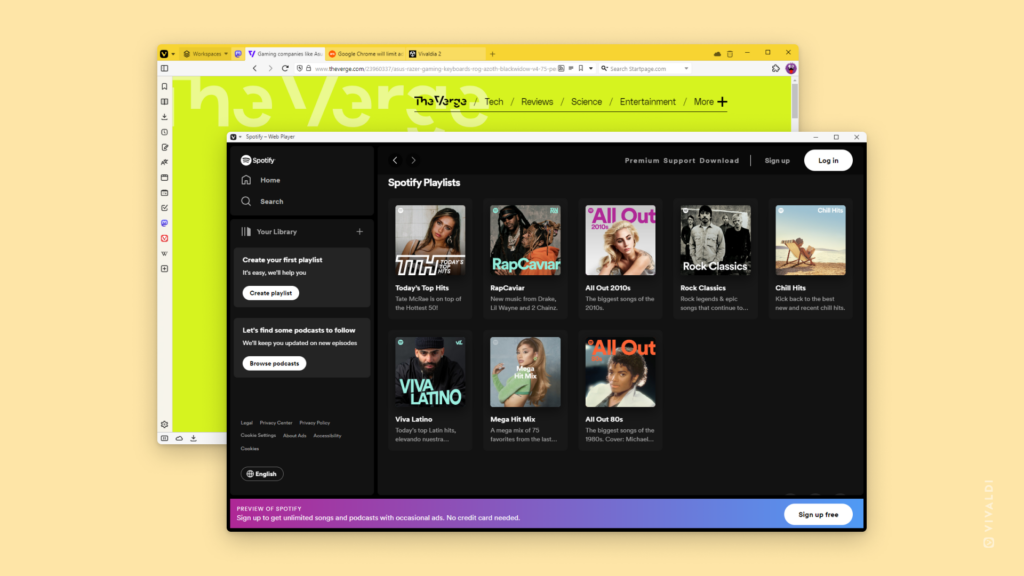
Tip #390
November 20, 2023
Mute background tabs automatically by prioritizing audio in the active tab.
Imagine that you have some background music playing in one browser tab, but you come across a video (or some other media with audio) in another tab that you want to watch and listen to. So you go to mute or pause your music and only then start watching the video. And after you’re finished you need to go back to unmute or unpause the music. Annoying isn’t it? Vivaldi has a better solution to offer.
- Go to Settings > Tabs > Tab Features > Mute Tab Audio.
- Enable “Prioritize Active Tab”.
That way you can just start playing the video in the active tab and Vivaldi will automatically mute the audio coming from other tabs. Once you’re done watching the video, the audio from other tabs will be unmuted. Sweet! 😎
